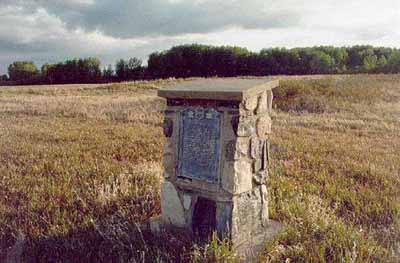Fort Pelly National Historic Site of Canada
Pelly, Saskatchewan

General view
(© Parks Canada Agency / Agence Parcs Canada, 2007.)
Address :
Pelly, Saskatchewan
Recognition Statute:
Historic Sites and Monuments Act (R.S.C., 1985, c. H-4)
Designation Date:
1953-05-26
Dates:
-
1856 to 1856
(Construction)
-
1793 to 1912
(Significant)
Event, Person, Organization:
-
Hudson's Bay Company
(Organization)
Other Name(s):
-
Fort Pelly
(Designation Name)
Research Report Number:
1968-41; 1968-29; 1967-35; 1967-12; 1960-40; 1960-02
DFRP Number:
13986
Plaque(s)
Existing plaque: Pelly, Saskatchewan
This post, built in 1856 by Chief Factor W.J. Christie of the Hudson's Bay Company, replaced the first Fort Pelly which stood on the low ground to the west of this spot. For almost half a century the headquarters of the Swan River District, it was the last of a series of posts at the Assiniboine Elbow dating back to 1793. This large establishment with its substantial buildings and fine herds of horses and cattle excited the admiration of many early travellers who passed this way along the Carlton Trail. Fort Pelly was abandoned at the beginning of the twentieth century.
Description of Historic Place
Fort Pelly National Historic Site of Canada is an archaeological site that contains remains of Hudson’s Bay Company fur trade post located at the elbow of the Assiniboine River near Swan River, Saskatchewan. Sited on a rise above the river and overlooking agricultural plains, the designation consists of the area encompassed by the original site of Fort Pelly II, which contains cellar depressions and remains of the buildings and activities.
Heritage Value
Fort Pelly was designated a National Historic Site of Canada in 1953 because: it was, for almost half a century, the headquarters of the Swan River District of the Hudson’s Bay Company.
The heritage value of Fort Pelly lies in its associations with the Hudson’s Bay Company as illustrated by the site, setting and archaeological remains. Fort Pelly was established as a fur trade post by the Hudson’s Bay Company in 1793, but the present fort was not constructed until 1856. It was built on higher ground than its predecessor by Chief Factor W.J. Christie, and was a large establishment with a strong agricultural focus. It was abandoned in 1912. The fort was sold in 1921 at which time all of its buildings were torn down or removed. Since becoming a National Historic Site of Canada managed by Parks Canada in 1959, it has been the site of archaeological investigation.
Sources: Historic Sites and Monuments Board of Canada, Minutes, October 1971.
Character-Defining Elements
Key elements that contribute to the heritage character of the site include: the footprint of the fort stockade, remnants and landforms indicating its layout, profiles and composition; the remnants indicating the footprints, forms, composition, and materials of individual buildings and structures, including the Chief Factor’s Residence, the Fur Storage Building, the Warehouse and Trader’s Store, and several utility buildings such as a stable and ice house; the functional and spatial inter-relationships of the building sites; the remnants of specific activities at the fort, that is, fur collection, storage and distribution, animal and plant agriculture, the provision of pemmican, logging and transportation facilities; the evidence of aboriginal life including residues of the “Indian House” and possible campsite locations; any and all remains of the fort as a fur trade centre that describe life at this post, discovered and as yet undiscovered, both above and below ground, including those removed from the fort and stored in Parks Canada and Pelly Museum collections; its functional setting by a plain that permitted agriculture; the evidence of historic trails leading to and from the fort; the viewplanes from Fort Pelly II to the site of Fort Pelly I; the viewplanes from the fort to the Assiniboine River and its elbow, to woods to the north and east, and to plains on the south.